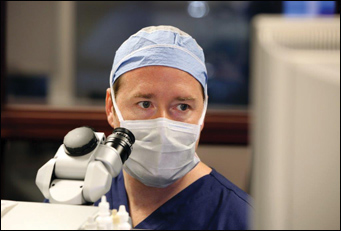PUBLICATION EXCLUSIVE: OSN round table: Presbyopia becoming a subspecialty of ophthalmology
At the European Society of Cataract and Refractive Surgeons meeting in Copenhagen, Denmark, Ocular Surgery News gathered a panel of international experts to discuss the current state of presbyopia correction.
George O. Waring IV, MD: I will start with some demographics. In 2020, there will be more than 2 billion presbyopes worldwide, so that is 4 billion presbyopic eyes. What is your perspective on these demographics?
Aylin Kiliç, MD: In the past we were doing more LASIK, but LASIK has been going down in popularity. With technological advances, we in presbyopia are making advances in multifocal treatments, so while LASIK is declining, we are seeing many more lens-based solutions for presbyopia developing.

Image: Waring GO
Sheri Rowen, MD, FACS: As soon as somebody starts losing their near vision, that is the beginning of what we call the dysfunctional lens. The lens is not accommodating properly anymore. Those of us who are involved in this space are starting to understand how to restore that function in some way. We have seen it as correcting vision up until now, but I think the paradigm is starting to change where we are thinking about restoring natural accommodation and restoring lens function and utilizing a “staging” system to determine which procedure is best for our patients based on their clinical manifestation of presbyopic dysfunction. Perhaps this method will allow us to treat the vision loss early on so that we do not have to go to the point where that is lost and then we have to do vision correction. If we can start shifting the paradigm to that younger age group, I think we will achieve the goals we are looking for.
Elizabeth Yeu, MD: From the perspective of refractive surgery in general, so much has changed. Yes, there is corneal refractive surgery, but the options have always been limited when it came to presbyopia correction. Those patients who are moderate or mild myopes, who are aged 40 and up who are seeking both distance and uncorrected near visual acuity in whom we do not want to seek that IOL option, now have the expanding base of corneal as well as scleral and pharmacologic methods. I think it is going to increase our armamentarium. We are finally coming to a point that presbyopia correction is going to boom the way some other fields in the anterior segment space have.
- Click here to read the full publication exclusive, Cover Story, published in Ocular Surgery News U.S. Edition, April 25, 2017.
